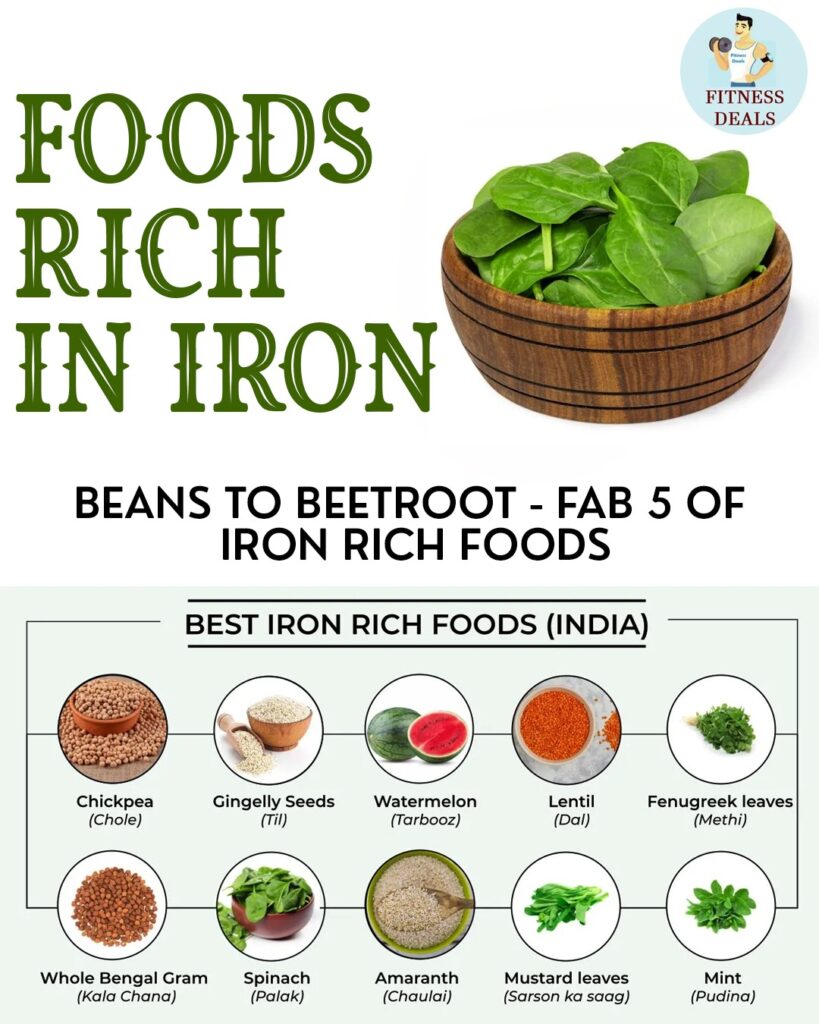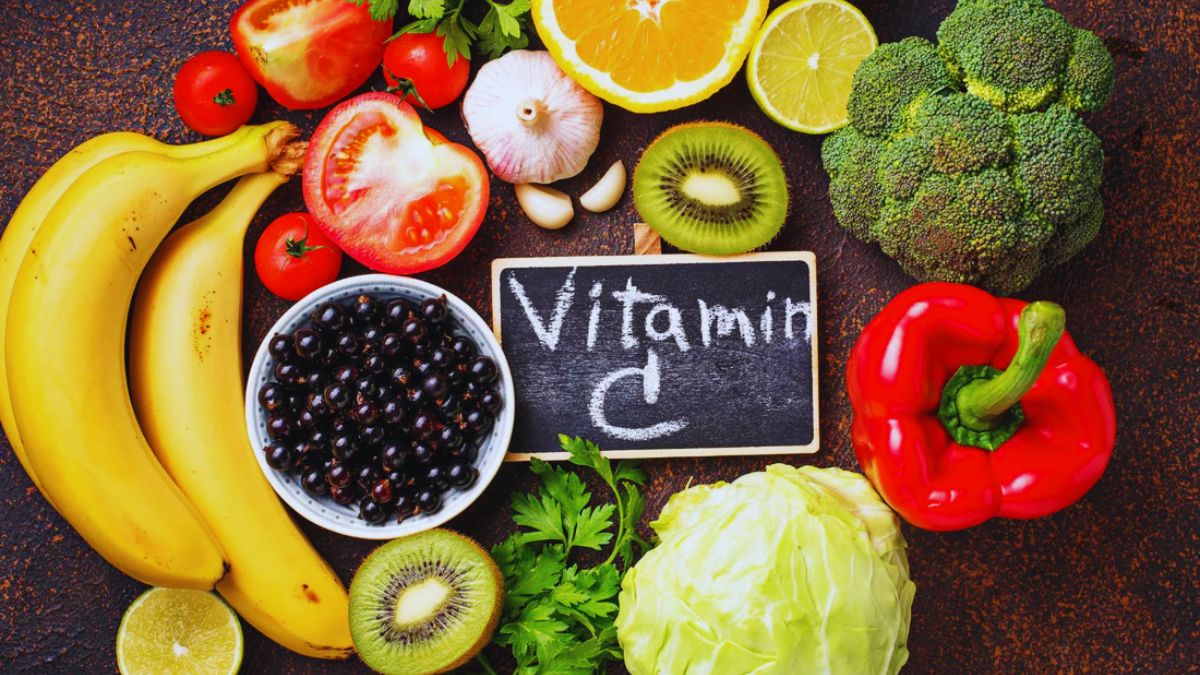Iron is a crucial mineral required by the body for several vital functions, the most important being the formation of haemoglobin – a protein in red blood cells that carries oxygen from the lungs to the rest of the body. A deficiency in iron can lead to anemia, fatigue, dizziness, and weakened immunity. To prevent such issues and maintain optimal body health, incorporating iron-rich foods into your daily diet is of paramount importance.
Here’s an informative guide on the top five iron-rich foods that are not only nutritious but also widely available and easy to include in meals.
To increase your iron intake, focus on consuming a variety of iron-rich foods, both animal and plant. Good choices include red meat, poultry, seafood (especially oysters), beans, and dark leafy greens like spinach. Additionally, fortified cereals and citrus-rich fruits can also contribute to your iron intake.
What is Iron?
Iron is a nutrient that comes from your diet. It’s needed for many functions in your body, with one of the most important being to prevent anemia. Iron is needed to make haemoglobin; a molecule found in your red blood cells (RBCs). Haemoglobin moves oxygen through your body. While your body can store iron, it can’t make iron. The only way to get iron is by consuming (eating) it.
There are two types of iron in food-
- Haem Iron – Easily absorbed by the body
- Non-haem Iron – Harder for the body to absorb

Why is Iron Important in your Diet?
If you don’t get enough iron, you can develop an iron deficiency. Iron deficiency occurs when your iron levels are too low – below the required levels. Iron deficiency can cause fatigue, lead to migraine and headaches, reduce the concentration and attention span of the body. In severe cases, iron deficiency can also lead to anemia.
If you are worried that you are iron deficient, speak with your doctor. He/She may suggest blood tests to check the levels and also prescribe iron supplements or IV drips for increasing the content at a quicker rate. How does one prepare food, and which food combinations you eat together affect how much iron your body absorbs. For example, eating foods rich in Vitamin C can help you absorb more iron in the body.
Recommended Dietary Intake (RDI) of Iron
Like most other essential nutrients – vitamins and minerals, the recommended daily dietary intake of iron depends on the age and sex of the consumer. On an average, the RDI levels specified for different age brackets are:
| Age | Sex/Gender | RDI Level |
| Up to 8 Years | Male/Female | 10-11mg/day |
| 9-13 Years | Male/Female | 8-9mg/day |
| 14 to 18 Years | Male | 11mg/day |
| 14 to 18 Years | Female | 15mg/day |
| 19-50 Years | Male | 8-9mg/day |
| 19-50 Years | Female | 18mg/day |
| Above 50 Years | Male/Female | 8-9mg/day |
| Pregnant Women | 27mg/day |
Top 5 Foods Rich in Iron
1) Green-Leafy Vegetables – Spinach is one of the most well-known leafy greens packed with iron, especially beneficial for vegetarians and vegans. While it contains non-haem iron (plant-based iron), which is not as easily absorbed as iron from animal sources, its iron content is still significant. Additionally, spinach, kale and other leafy varieties are a rich source of Vitamin C, which helps enhance iron absorption. To increase iron absorption, pair spinach with Vitamin C-rich foods like lemon, tomatoes, or bell peppers.
2) Red Meat – The red meat category includes the lean cuts of beef, lamb, or pork – which is known to be an excellent source of Iron for the body. Being a haem source (this is easily absorbed by the human body). It is one of the most effective sources to fight iron deficiency anemia, especially in non-vegetarian diets.
3) Tofu – A soy-based food that’s popular amongst vegetarians and in many Asian countries, tofu has become widely popular as an iron-rich product in today’s times. A half-cup serving of about 120 gms provides as much as over 3 mg of iron. Tofu is also a good source of several minerals including calcium, magnesium and selenium.
4) Nuts & Seeds – Nuts and seeds are excellent sources of non-heme iron; a type of iron found in plant-based foods. They can be a valuable addition to your diet to help increase your iron intake and prevent or manage iron deficiency. Some of the most iron-rich nuts and seeds include pumpkin seeds, sesame seeds, flaxseeds, almonds, cashews, and pistachios. Pumpkin seeds contain as high as 11mg iron in a single cup serving.
5) Seafood – One of the most valuable sources for consuming iron, certain types of seafood – shellfish (oysters, clams and mussels) is particularly rich in this mineral variety. Other iron-rich seafood includes tuna, salmon, mackerel, and sardines. Heme iron, found in seafood, is readily absorbed by the body, making seafood a valuable source for those needing to increase their iron intake.

Tips to Remember:
- Too much iron can be harmful. Always consult a doctor before taking any iron supplements.
- Iron is an important nutrient that you can get in a sufficient quantity through your diet.
- The amount of iron you need each day depends on your sex and age.
- There are two types of iron required by the human body and both must be consumed to maintain a balance.
- You must get your iron level checked at regular intervals to examine any possibility of anemia or haemochromatosis.
Iron plays a critical role in keeping the human body’s energy levels up and the immunity system strong. Whether you’re a meat-eater or a vegetarian, there are plenty of iron-rich foods to choose from. Spinach, red meat, legumes, pumpkin seeds and shellfish are just a few examples. With mindful meal planning and the right combinations, meeting your daily iron requirements can be both easy and delicious.
Incorporating these iron-rich foods into your diet not only helps combat the deficiency but also supports overall well-being. Keep your meals balanced, diverse, and enriched with these nutritional powerhouses – your body will thank you with better energy and vitality.



